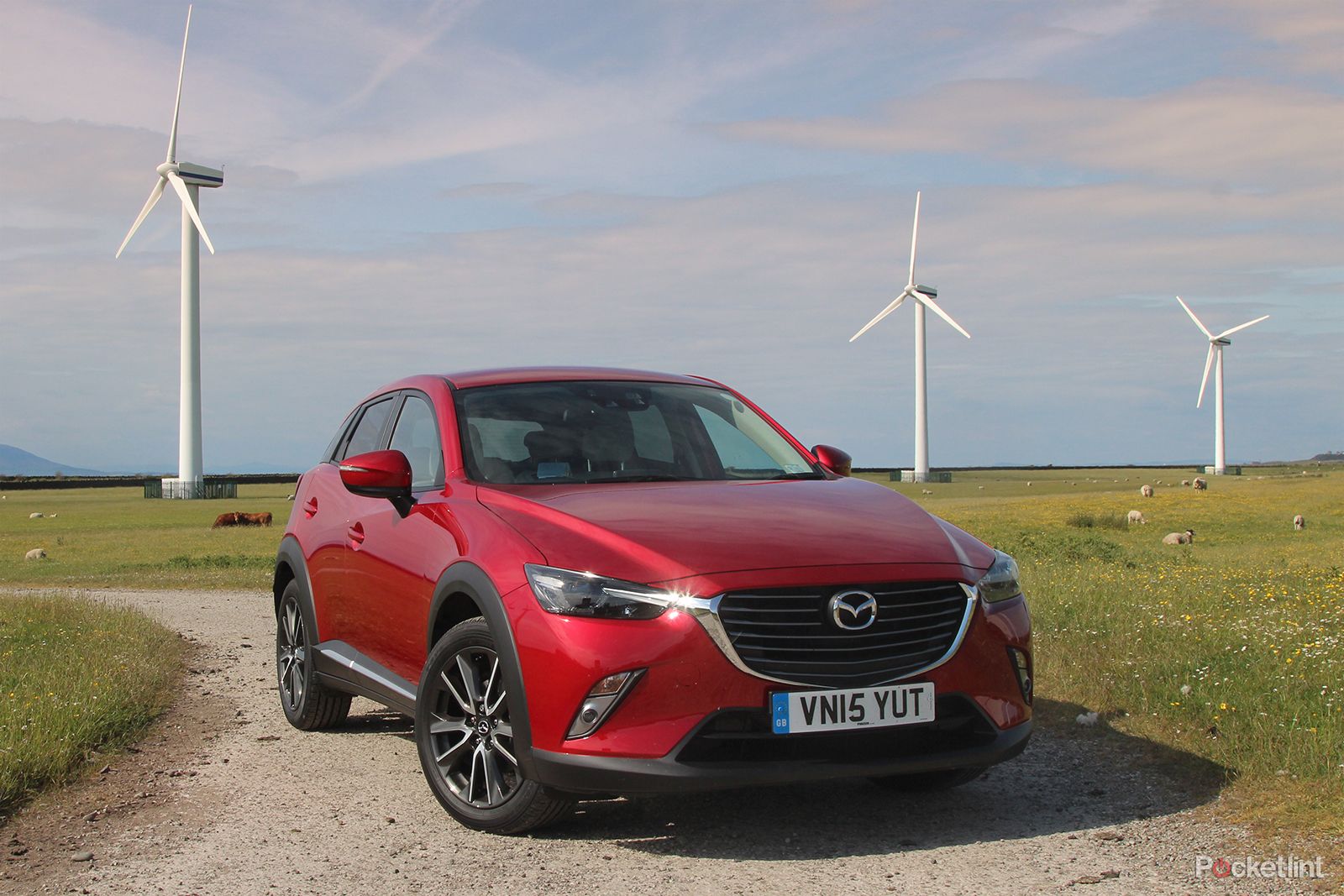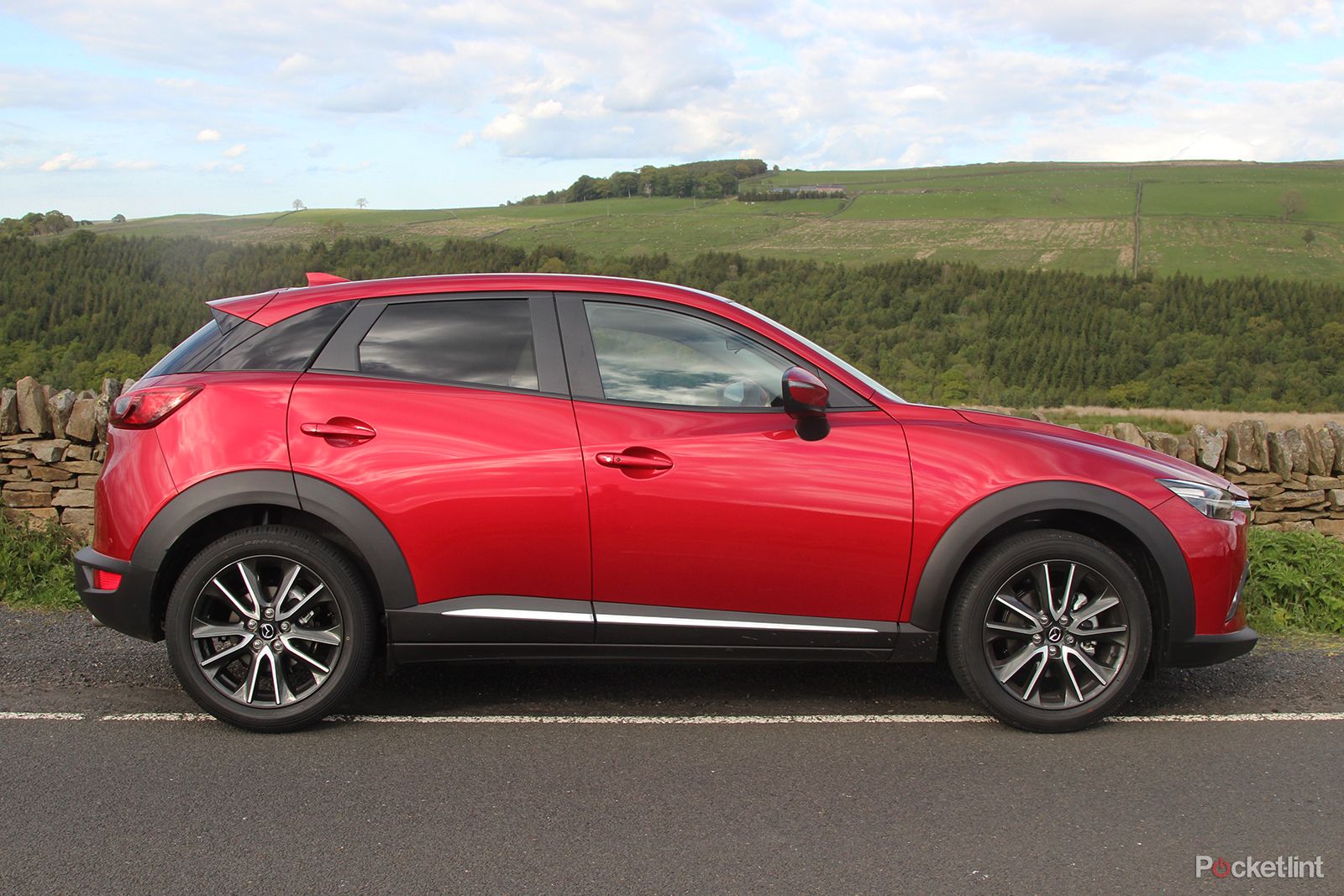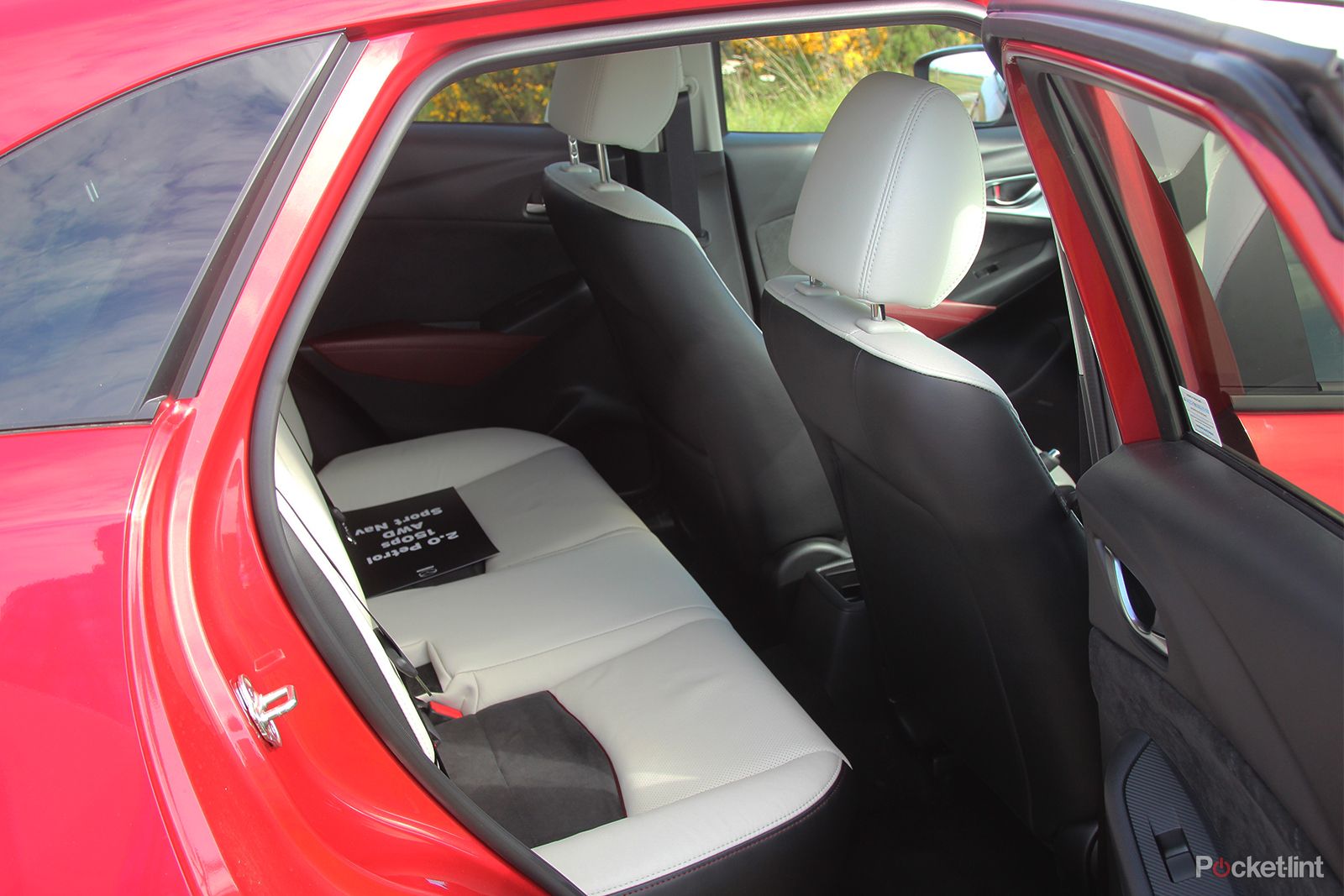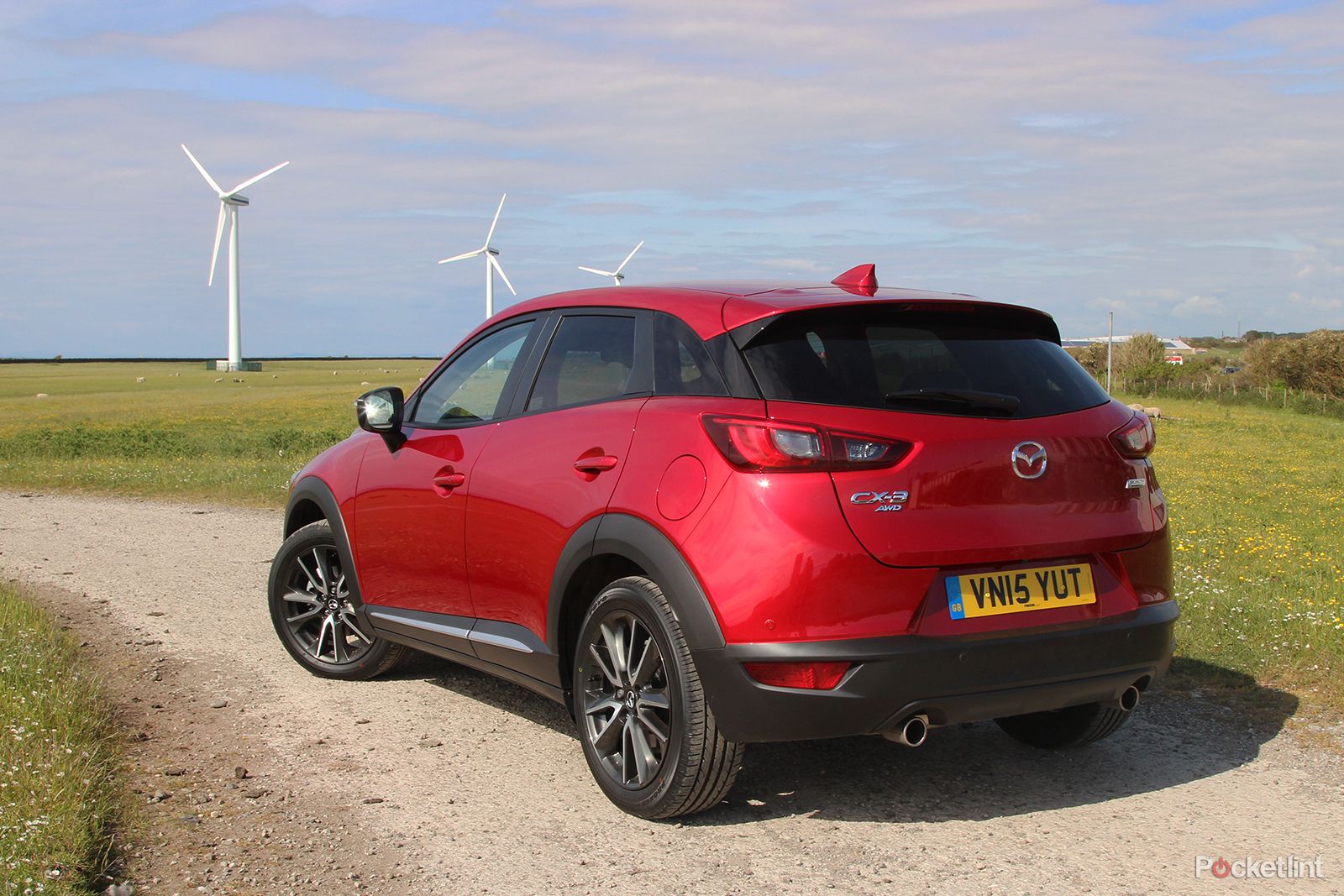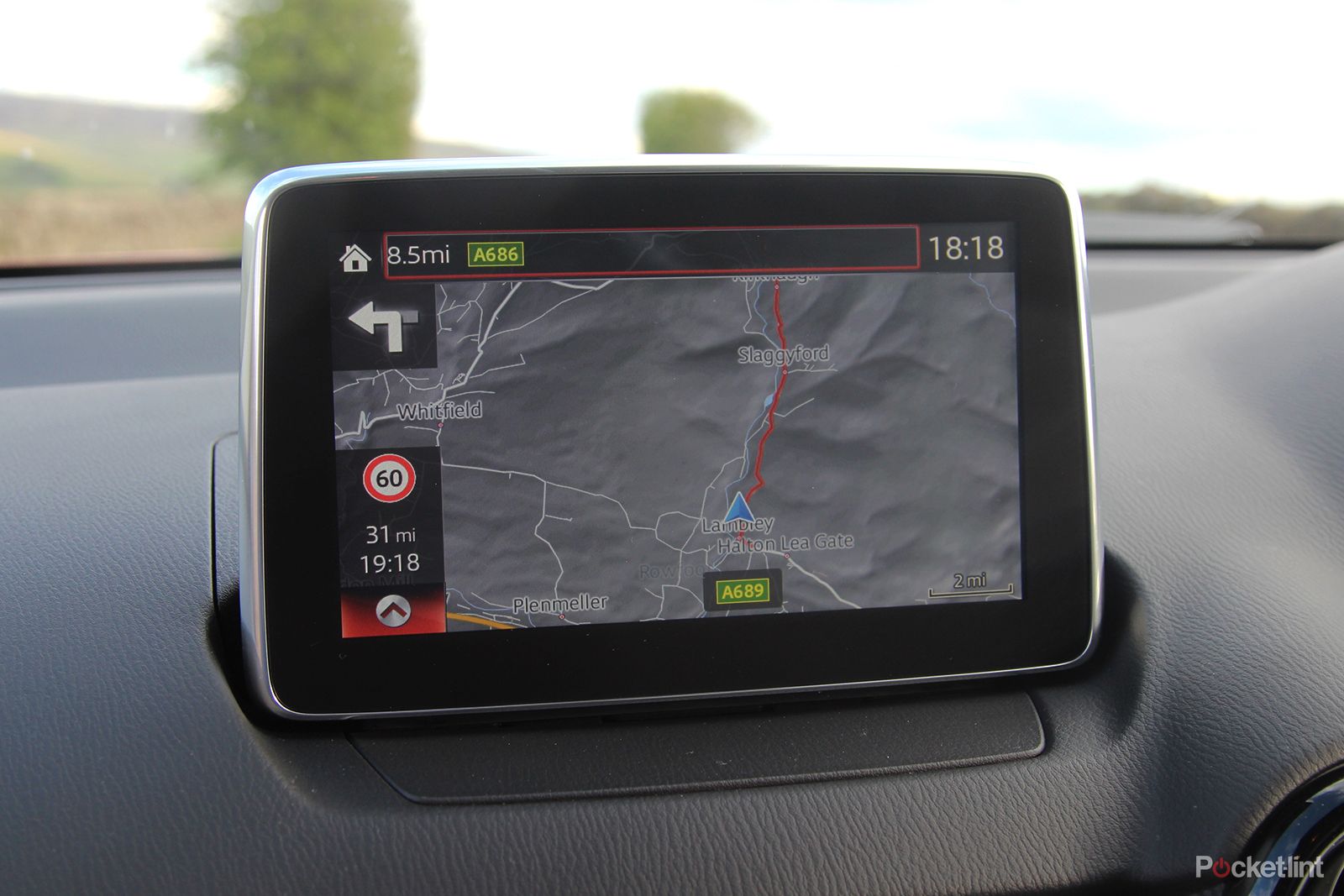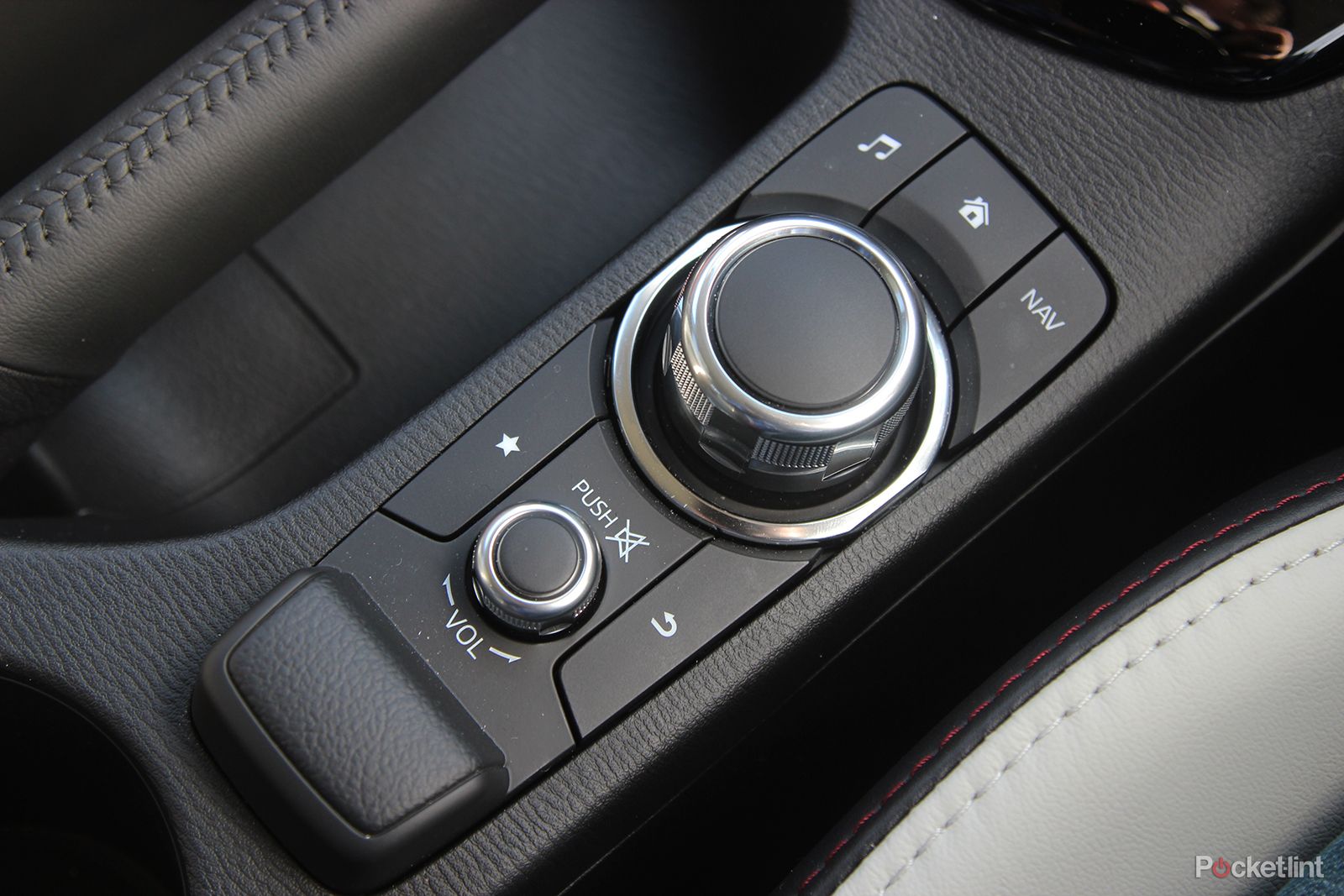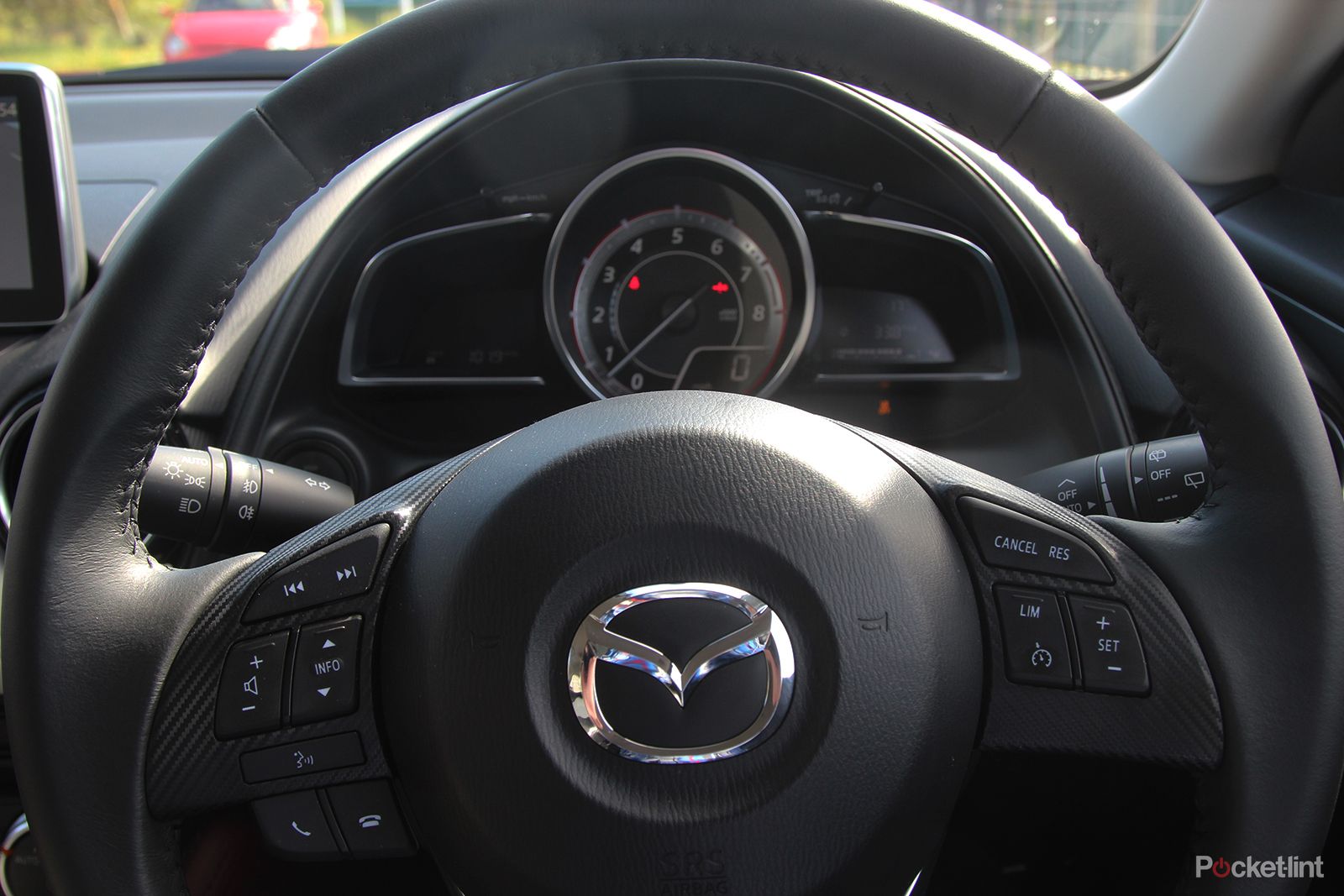What do the Nissan Juke, Mini Countryman and Renault Captur have in common? They're members of one of the fastest growing automotive segments – the so-called B-segment crossover.
Now Mazda has joined the party with the new CX-3, so we went to northern England to find out whether it's any good.
It's no surprise that in a marketplace which contains cars like the Juke and Mini, Mazda's chosen to bat on the front foot with the CX-3's design. The car adopts the Kodo design language that much of the Mazda Range (2, 3, 6, CX-5, MX-5) has recently taken on – giving a distinctive brand appearance and a strong Japanese flavour.
This doesn't feel like a car of European origin given its long, flowing horizontal lines meeting sharp creases on the body side and in the details.
The CX-3 is longer than many of its rivals at 4.2 metres – it's got a longer bonnet and what's referred to in design circles as a cab-rearward profile, which means it looks more lithe and sporting than some of the competition.
Certainly Mazda's keen to play up the CX-3's coupe-like profile. That's stretching the truth a bit far, but the floating roof and strong graphic window-line certainly help it look modern and striking.
There's a small price to pay for the design tough. With more of the car's length given over to the engine compartment, the interior cabin – while hardly what you'd describe as tight – isn't as spacious as some rivals in the back seats. Headroom is fine, but six-footers will struggle to sit behind their equivalent sized passengers very comfortably.
Given that a B-segment crossover is hardly the thing most buyers think of if they regularly need to ship four burly blokes around, we reckon most will find that compromise just fine.
And this "do it differently" approach carries through the car. Although the CX-3 isn't ground-breaking overall; it doesn't set a new mould for this class of car – but we admire Mazda's different approach, which its SkyActiv-branded suite of tech is at the heart of.
SkyActiv is about "fuel economy, low emissions and making cars fun to drive" in Mazda's own words. But that doesn't mean it's chasing headline figures or jumping through hoops to achieve artificially inflated efficiency.
So rather than a tiny capacity petrol engine, with just a couple of cylinders and a turbo, Mazda takes what at first feels like an old-school approach by offering 2.0- petrol and 1.5-litre diesel engines – the petrols making do without turbos. Which is almost unheard of in 2015. But the beauty of this approach is that the cars never feel lethargic, and rarely feel like they need to be thrashed. They're refined with it.
Although 137 g/km (petrol) and 105 g/km (diesel) aren't figures to write home about and mean you're going to be paying a smidgen more in tax than some rivals (based on our experience), if you're the sort of person that decries the ridiculousness of "official" fuel consumption figures and why you can never get near them in real life, these Mazdas could be just the tonic.
We were achieving in excess of 40mpg in the petrol car, and 50mpg in the diesel. And don't forget this is on a model launch, where you tend to drive with a constant enthusiasm you'd rarely employ in day-to-day driving.
Part of the reason for the good economy – and the fact that the CX-3 drives with a willing, agile quality – is that the SkyActive technology extends to body and chassis, with Mazda taking weight out where possible to make the 2.0 petrol CX-3 tip the scales at just 1,230kg.
The CX-3 is genuinely a nice thing out on the road. The steering's a bit light and the ride on the Sport models with 18-inch wheels is a bit sharp-edged at times, but if you show some enthusiasm it raises its game and is as fun as anything this side of a Mini.
It's the kit and tech on offer where the CX-3 really plays its trump cards. All cars are well specced, but we'd push you towards the higher-spec Sport Nav cars if your budget allows.
All CX-3 models get a raft of safety kit, with lane departure warning and smart city braking standard on SE-L and Sport Nav lines. They're not badly off for tech either, all get a 7-inch colour multimedia system, DAB, Aha and Stitcher integration and cruise control.
But the Sport Nav (£900 more than SE-L grade) adds sat nav, a head-up display, LED running lights, reverse camera, keyless entry and a Bose sound system that (once we'd switched from Bluetooth streaming to a USB cable) delivered a range of tunes with decent clarity and bass punch (you lose the underfloor boot space for the subwoofer though). What's more, you'll get LED headlamps and 18-inch alloys, which really set off the look of the car.
Whichever grade you go for, you're going to be controlling audio, car settings and navigation through Mazda's MZD Connect multimedia interface. It consists of that 7-inch floating screen display mounted on the upper dash surface – and which features touchscreen functionality up to 5mph.
When travelling at higher speeds, or if you simply prefer it as an input method (and we do), there's a rotary control knob behind the gearstick. It works well, is intuitive and responsive and features intelligent shortcuts, a back and a home button.
While we'd not previously had long exposure to this system, we were able to jump in and use it without confusion straight away – it's highly intuitive and arguably the best system of its kind in any car outside of the German premium brands.
Fly in the ointment? The position of the radio volume control knob (further back in the car, situated on the centre tunnel behind the MZD rotary controller) feels like an odd-stretch of your hand; it just isn't intuitively placed. We kept reaching to the centre of the dash to adjust the volume to find it wasn't there. There are buttons on the steering wheel though to compensate.
Also the sat nav map, while generally clear, tends to delay its rotation at junctions and roundabouts before making one super-quick, head-swivelling jump as you exit at (what you hope) is the right junction.
But we're nit-picking. Overall, while the CX-3 doesn't re-invent the market like the Nissan Juke did, its array of qualities is compelling. It feels high-tech, it looks the part, and it's a Mazda – so backed-up by an enviable longevity and reliability reputation.
For the private buyer in particular it will make a lot of sense – the cheaper price and easy flexibility/decent economy mix of the petrol engine meaning you should hesitate before defaulting to diesel, too.
The elephant in the room is the price. At a headline starting figure of £17,595 the CX-3 is what you might call confidently pitched. Mazda is pushing upmarket, and £20,495 for the 2.0 SkyActive-G Sport Nav spec we'd point you towards, is strong money indeed.
Mazda makes no bones about the fact that it sees itself as different, as offering a more-than-mainstream proposition, with smart real-world-optimised technologies and stand-out design. It thinks customers are willing to pay for that and wants you to be comparing its cars with the Minis and VWs of this world – and perhaps even the odd Audi – rather than Fords and Vauxhalls.
The CX-3, and Mazda, has not quite achieved the sort of cachet the four rings or three-pointed star brands have just yet. But this is nonetheless an appealing small crossover, with plenty of charm, an applaudable "do it differently" approach and which we're sure would be a joy to own.

